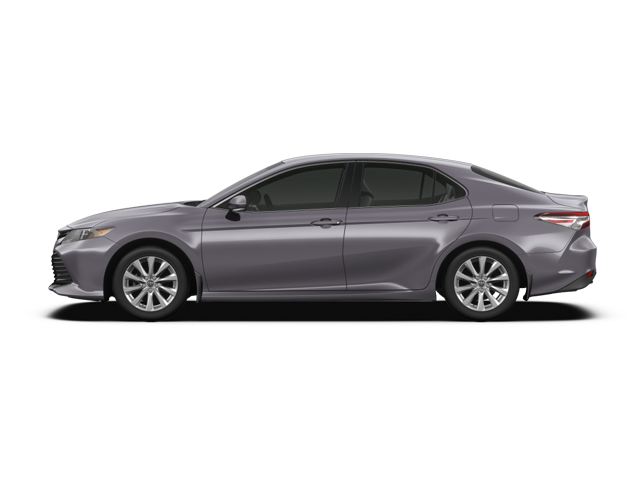Charlottetown, PEI – The trend towards utility has now reached one of the biggest vehicle segments in North America – or more precisely, in the United States, where the mid-size sedan has for many years dominated automotive sales. No longer.
Recent years have seen a swing, and an ever-accelerating one at that, towards utility vehicles, to the point where even big players like Toyota are looking to re-examine their trusted sedans in hopes of holding on to their market niche, or at least wining over that minority of new buyers who don’t necessarily want to drive an SUV.
For its part, the brain-trust at the manufacturer’s Canadian division believes firmly that a new, positive chapter is beginning for the second-best-selling car in the history of the brand. This new chapter, according to official Toyota talking points, focuses on increased sportiness and driving dynamics that are more inspired. These are not traits normally identified with the Camry brand over the years; consumers generally were attracted to it for its reliability and strong resale value.
Is the manufacturer poised to stop the slide in sales with this new 2018 edition? We set out to answer that question with a test drive through Canada’s smallest province.
In three flavours
Contrary to other players in this segment, Toyota has stuck with offering a V6 under the hood of its popular sedan. While it’s true that Ford returned last year to that configuration with its V6 turbo offered in the Fusion, that move was not made with the intention of attracting mass-market consumers – unlike the Camry. The newly revised V6 also generates, for the first time, more than 300 hp – 301 to be exact – and a maximum torque of 267 lb-ft, the most ever by a naturally aspirated V6 in this category.
The other, less sexy – and of course more affordable – option has just 4 cylinders, with the 2.5L engine bloc also naturally aspirated. And yet, this engine dubbed Direct Force holds its own against any other in the segment. It delivers more-than-adequate horses (203, or 206 with the XSE version’s dual exhaust) and torque (184 lb-ft, or 186 in the XSE) for a car this size.
The two engine setups, which forego electric assistance, combine with an 8-speed automatic transmission that was just recently introduced in the Sienna and the 2018 Highlander, though the gear ratios have been tweaked for the Camry. Drivers can of course use the gear shifter or even paddle shifters in some cases to shift gears manually.
As for the hybrid system, a technology that Toyota has extensive expertise in, the Japanese automaker has announced its intention of increasing the number of hybrids it sends out on the road; its objective is to have the hybrid versions account for 25% of the Camry’s sales (for the current model, that percentage sits at 11%). This helps explain the considerable effort that has been put into boosting the car’s driving dynamics.
The hybrid still makes use of the same 2.5L 4-cylinder, but complements it with an electric motor fed by an upgraded battery bloc. As a result the net power generated by the hybrid powertrain is now 208 hp, with an official fuel consumption rating of 4.9L/100 km.
It’s worth noting that the type of batteries used in the car differs depending on the trim chosen. The Camry LE hybrid is fitted with lithium-ion batteries, while the SE and XLE versions are powered by more compact and lightweight Nickel Hyper Prime NiMh batteries. In all trims, the batteries are now placed under the rear row of seats, which means owners can finally make use of a fully foldable rear row to gain cargo space. The Camry hybrid powertrain is wedded to a CVT transmission.
The importance of the interior…
Another area Toyota’s mid-size sedan needs to excel in is the quality of its interior. For the eighth generation of the model, the presentation of the cabin is decidedly less austere and more expressive. The dashboard, its centre console all angular lines, may frighten more conservative consumers somewhat, but in return I salute the verve and innovation manifested here, which isn’t something that could always be said of the Toyota Camry.
While the design may leave room for debate, the small size of the knobs is definitely a disappointment. And yet the manufacturer had for years been conscientious about making buttons of adequate size. Consumers who swear by the Camry certainly won’t be put off by this, but in daily use it does become irritating. In any case, the overall impression the cabin gives is one of quality.
If Toyota was serious about making a splash with the rejuvenated driving dynamics of its mid-size sedan, it also needed to make sure the driver’s seat is ergonomically sound and comfortable – and it is. The seats of the new Camry are soft enough to make longer road trips a pleasant experience, while still being sufficiently sculpted to hold occupants in place when cornering. Even the steering wheel is comfortable to grip, and the commands mounted on it are easy to use – which too often is not the case.
The 2018 Camry cannot anymore be considered a mere mid-range mass-market sedan, even if sales of the model may approach that level, because for one thing the level of included and available equipment has once again been upgraded. Among them are available heads-up display, smartphone recharging, large-sized screen displays, a bird‘s-eye view monitor (ideal for parking in tight spaces) and even the first inclusion in a Toyota vehicle of the Entune 3.0 system. The latter continues a number of applications that of varying degrees of usefulness to drivers depending on their requirements. The service is offered for free for a three-year period, after which members will need to pay a monthly fee to benefit from the Entune applications.
On the road: the hybrid version shines
Has Toyota succeeded in providing motorists with an enhanced driving experience aboard the new Camry? In one word, yes. From the get-go, it’s clear from driving the sedan that the steering is heavier and noticeably more connected to the road. What’s more, the rigidity of the Toyota New Global Architecture (TNGA) chassis makes it superior to its predecessor. Firmer than before, the suspension does not make for an uncomfortable ride – on the contrary – but it does give the sedan a nimbleness that is new to the model. Toyota even went so far to bring along to the P.E.I. road test two 2017 Camrys, just for comparison.
Though the acceleration is not earth-shattering, the 4-cylinder-equipped version acquits itself quite well in this regard. The gearbox, meanwhile, is a model of transparency. With the exception of a few steep hills that necessitated a climb in RPMs, the unit remained quite discreet.
For its part, the V6 is made to measure for motorists who like muscular acceleration. Not only is the sound produced by the 6 cylinders more inspiring to hear when bearing down on the gas pedal, but accelerations themselves are also crisper. The additional weight bearing on the front axle is noticeable, but in general this version will please old-school drivers. This is probably why Toyota retained the V6 for this generation of the model in the first place. It’s an open question, though, whether it will survive when the next generation comes down the pike.
The biggest surprise we registered during our initial P.E.I. road test was definitely regarding the hybrid. Toyota Chief Engineer Masato Katsumuta has said that a lot of effort went into improving the car’s reaction during accelerations… and it shows! The hybrid is just more fun to drive than before, even with the often-derided CVT transmission. Of course, this version of the Camry is also the most frugal – fuel consumption hovers around 5L/100 km.
With a starting price of $26,390 for the Camry L, total cost for the car can easily climb to $40,000 or more. With a wide range of colours, trims and engine set-ups on the menu, Toyota shows no signs of neglecting its mid-size sedan for 2018. The sheer variety of trims, colours and options does make the buyer’s life a little more complicated when it comes to making decisions, but that’s another story!
Road Tests and Reviews






fr.jpg?scaledown=450)

